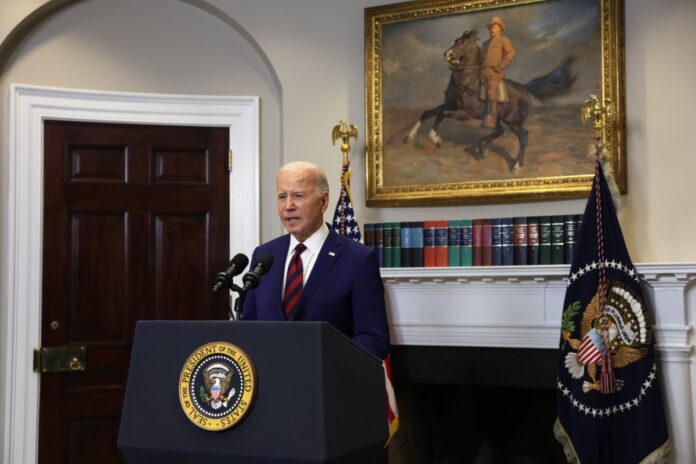The recent collapse of the Baltimore Bridge has thrust the topic back into the spotlight. President Joe Biden’s pledge to have the federal government bear the full brunt of the rebuilding costs is a beacon of hope for many, but it also raises questions about the efficiency and future of America’s infrastructure management.
Early Tuesday morning, a container ship collided with a support beam of the Francis Scott Key Bridge in Baltimore, leading to its catastrophic failure. This bridge, a crucial artery for approximately 30,000 vehicles daily, now stands as a stark reminder of the vulnerabilities lurking in our nation’s infrastructure.
Biden’s response was swift, promising that “the federal government will pay for the entire cost of reconstructing that bridge,” a statement met with a mix of hope and skepticism. The commitment to expedite the reopening of the bridge and the port it serves underscores the administration’s urgency in addressing this disaster. Yet, it also highlights a familiar refrain in American politics: the battle over funding and the pace at which governmental machinery moves.
Here’s what you need to know:
- The bridge is a critical segment of Interstate 695, serving as a major crossing of the Patapsco River.
- Construction of the original bridge began in 1972, with completion five years later, at an initial cost of $141 million — roughly $743 million in today’s dollars.
- This incident is part of a series of transportation-related disasters under the current administration, including last year’s Norfolk Southern train derailment in East Palestine, Ohio, which had significant environmental and health impacts on the local community.
While the President’s promise of federal funding offers a glimmer of hope, it also serves as a reminder of the broader issue at hand: the dire need for a comprehensive and forward-thinking approach to infrastructure in the United States. The current administration’s handling of such crises, from delayed responses to logistical challenges, casts a long shadow over the efficacy of its approach to infrastructure and emergency management.
The bridge collapse not only disrupts daily life and economic activities in Baltimore but also represents a microcosm of the larger challenges facing America’s infrastructure. With the port of Baltimore setting records for cargo volume, the need for resilient and robust infrastructure has never been more apparent. Yet, as we navigate these troubled waters, the question remains: Are we doing enough to secure the future of our nation’s infrastructure?
The answer lies not only in the allocation of federal funds but in a bipartisan commitment to reimagining and reinvesting in the backbone of America’s economy and safety. As we move forward, it is imperative that we learn from these incidents, not just as isolated events, but as urgent calls to action for a more resilient and reliable future.
In the spirit of constructive dialogue and action, we invite our readers to share their thoughts and experiences. How can we, as a nation, come together to address the challenges facing our infrastructure? What lessons can be learned from the current administration’s response to such crises? Share this article, explore more content on our platform, and subscribe to our newsletter for insightful discussions on shaping a brighter, more secure future for America.


